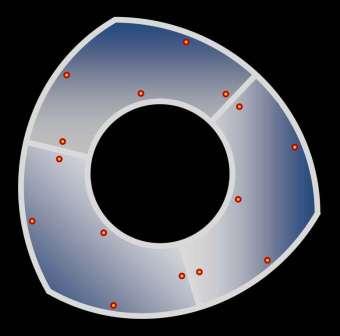| < Lessons from Euclid > |
| It is one thing to propose a tetrahedral lattice for the geometric arrangement of a space station habitat, but to outline in detail size
and form of the various components can be a more demanding task. For me
as a chemist it was no problem to set up the crystal structure of
diamond with the program ChemBio3D,
simply by adding carbon atoms to
each other. But since it will be a problem to bring into orbit a 3-m
sphere as a whole, I decided to disassemble it into identical parts. |
| To
deal with my problem in more practical terms, I procured on a warm
summer day a melon with almost perfect spherical shape. Then, during a
picnic near the Danube, I tried to inscribe on its surface where the
holes should be for the tetrahedral connections to the 4 neighbouring
spheres. I also tried to imagine the positions of 4 circular windows
exactly vis-a-vis. It took me some time until I realized that all I had
to do was to divide my melon into 8 equal parts. |
| While
I enjoyed the melon's juicy interior,
I studied the left-over triangular pieces of solid peel. To my
amazement I obtained 8 equilateral triangles with 3 right angles
(Euclid would have been proud of me!). Back at home, I finished my work
by cutting into the middle of each piece a circular hole. Three final
cuts resulted in altogether 24 parts of identical size. In the figure at the top, we are looking from the inside at the last 3 pieces still together (in red are electrical plug-ins). |
| No
bolts and no holes are needed to fix these components to each other. On
the inside, each part is bordered by an overhanging rim. By these rims, bent backwards away from the border,
all parts are forced together with clamps that can be tightened
and opened again by free hand, without any tools, by a lever shifted either in position open |



